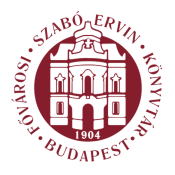Prohászka László: Polish Monuments - Our Budapest (Budapest, 2001)
The events of the autumn and winter of 1939 have an outstanding importance in the history of Polish-Hungarian relations in the 20th century. When the German war machine attacked Poland on 1 September 1939, German diplomacy made forceful demands on Hungary that it should allow Wehrmacht troops to pass through its territory. The government of Count Pál Teleki, defying Hitler’s predictable anger, rejected this demand, and even received over a hundred thousand Polish refugees. The flood of refugees toward Hungary was really unleashed by the Soviet attack on Poland on 17 September 1939. In addition to military and civil refugee camps, schools as well as cultural and health institutions were formed to cater for the needs of the Polish refugees, and they existed until 19 March 1944, the day Germany occupied Hungary, despite continuous diplomatic protests from the Germans. Many were arrested by the Gestapo on that tragic day. A bronze plaque on the wall of Fő utca 11 in District 1, unveiled on 19 March 1988 commemorates the Polish Doctors’ Group. The bilingual inscription below the Polish arms reads: The Group of Polish Doctors / was active in this house / during World War II. / In this place / several Polish patriots / fell victim to the German occupation / The Alliance of Polish- Hungarian Associations/ The József Bem Cultural Association / of Hungary. Although not recorded on the memorial plaque, it is worth mentioning that Major General Dr Jan Kotlataj-Srzednicki (1883-1944) was killed here on the same day, the first victim of German occupation. An ex-commander of the Military Academy of Warsaw, Kollataj-Srzednicki headed the Group of Polish Doctors founded on 3 November 1939 as a branch of the Hungarian Red Cross, and organised the health provision of Polish military and civilian camps. He was shot during an ambush while making arrangements for the transportation of a freight of medicines donated to Poland by the Chinoin pharmaceutical company. His grave in the new public cemetery in Rákoskeresztúr is marked by a plain stone cross. 38
